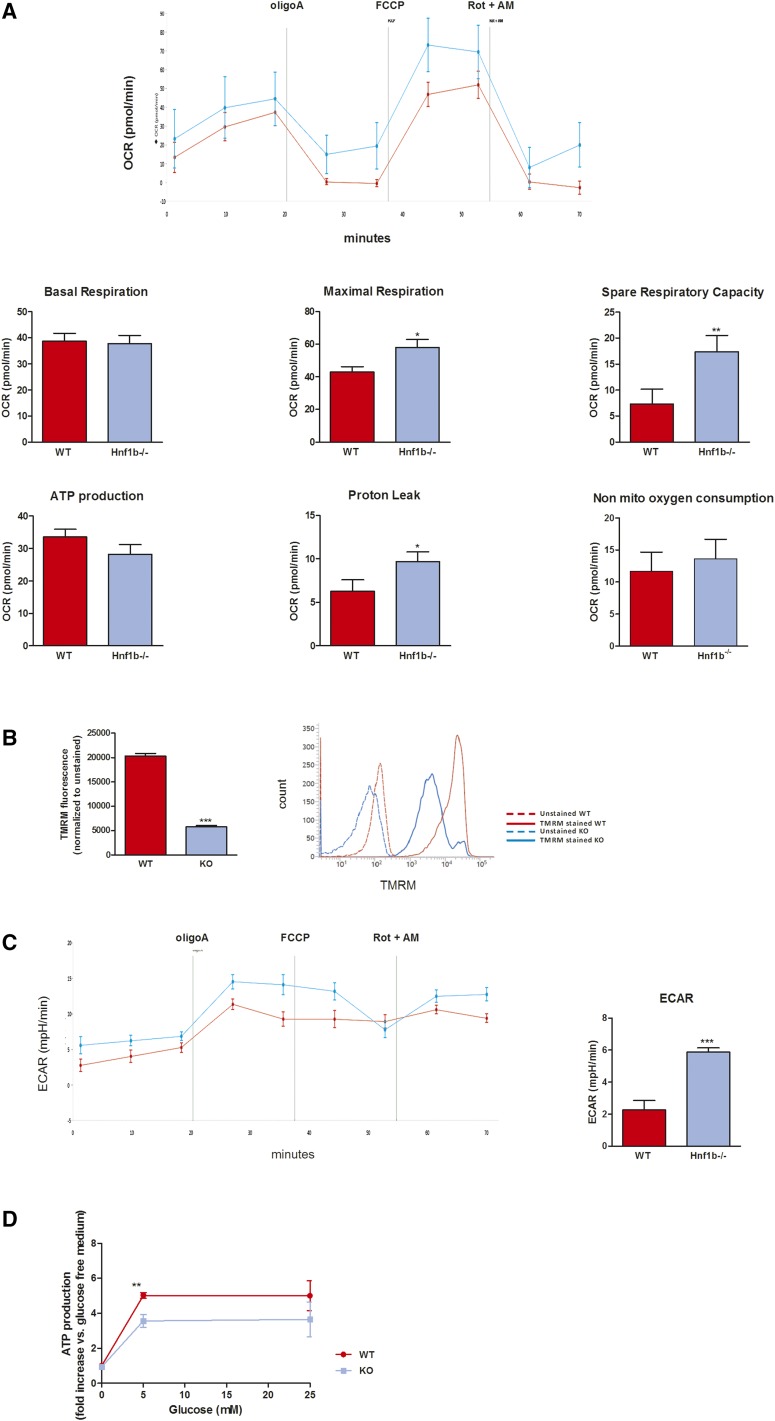Figure 7.
Hnf1b deletion leads to changes of the oxidative phosphorylation/glycolysis ratio. (A) The O2 consumption rate was measured using the Seahorse analyzer at basal state (three measurements over 20 minutes) and after sequential injection of oligomycin (respiration linked to proton leakage), FCCP (maximal respiration), and rotenone + antimycin A (nonmitochondrial respiration). Two measurements per drug were performed. Basal respiration was similar in both cell lines but maximal and spare respiration capacities were increased in Hnf1b−/− MCT cells, as well as proton leak. (B) The mitochondrial membrane potential (Δψm) was measured using tetramethylrhodamine methylester staining. A significant decrease of Δψm was observed in Hnf1b−/− cells, confirming Seahorse data that suggested mitochondrial uncoupling. (C) Extracellular acidification rate (ECAR) was measured concomitantly to the O2 consumption rate (Seahorse analyzer). In Hnf1b−/− MCT cells, a significant higher ECAR was observed, suggesting a metabolic shift from oxidative respiration to glycolysis. (D) ATP synthesis was reduced in Hnf1b−/− MCT cells grown at a limited glucose concentration (5 mM), compared with wt cells. *P<0.05; **P<0.01; ***P<0.001.

